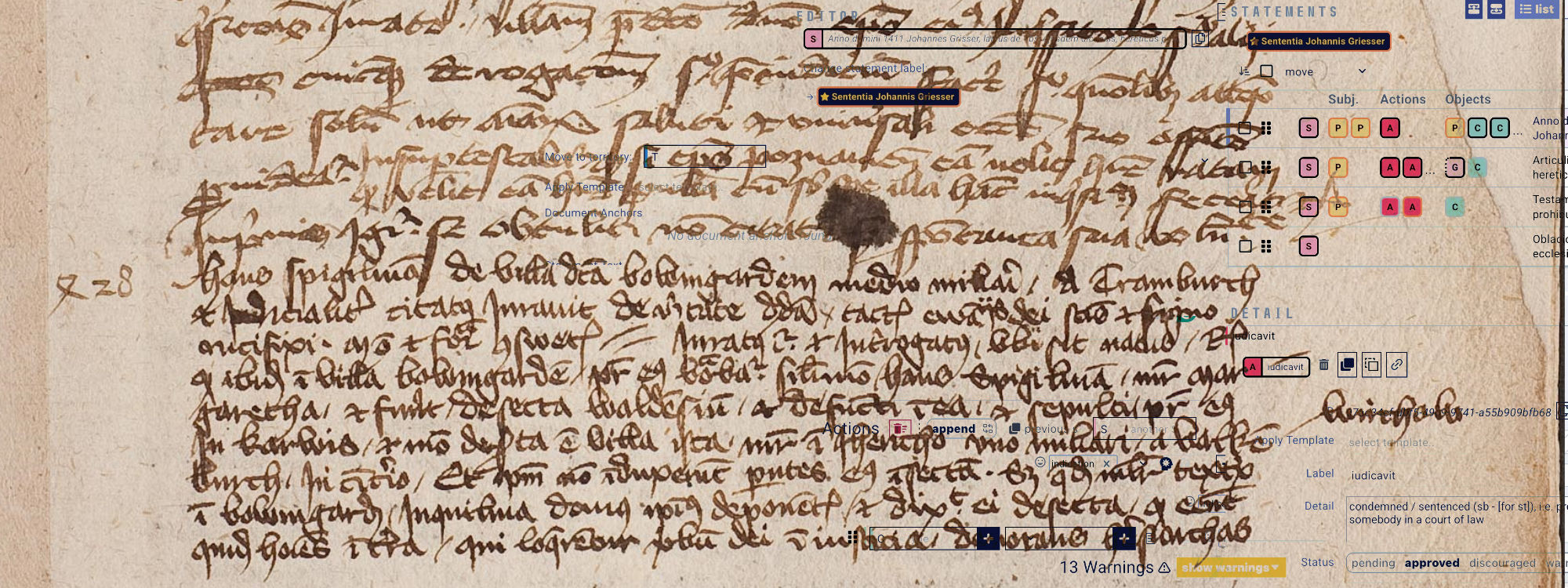About the project
The late Middle Ages (c. 1300–1500) was a crucial era of transformation. During this period, increasing levels of literacy and education, rapid urbanisation and an expanding economy led to the blooming of lay devotion through the emergence of new forms and modes of religiosity. Nonetheless, it was also an era of clericalisation, during which ecclesiastical authorities tightened their hold on beliefs and devotional practices. New mechanisms were sought to centralise the Church’s power. Yet, the laity’s agency and activity were vital in reproducing and maintaining religious structures and norms. This interaction and constant (re)negotiation between normative demands and daily practices constituted a driving force of medieval culture and society.
CULTCTRL is dedicated to addressing these concerns by taking substantial historiographical and methodological strides in utilising systematic pattern queries and Computer Assisted Semantic Text Modelling (CASTEMO). We specifically address criticisms of the lived religion approach for its excessive microhistorical focus and reliance on qualitative readings. Utilising computer-assisted methods, we will generate structured data, integrate micro and macro analysis, gain new information on lived religion, and explore scalability in historical research.
The project is the first large-scale approach to canonisation and inquisition sources through a comparative lens. Despite the importance of inquisition and canonisation records as sources for medieval history, their shared role as papal tools of control and their comparable nature, they have not been analysed together. There is thus a long-standing need for an in-depth comparison of inquisition and canonization testimonies. We answer this call with a team of experts on both canonisation and inquisition and with emerging methods that challenge the state of the art with ambitious source modelling and scalable analysis of qualitative and quantitative features of lived religion.
Our research questions arise from the empirical content of our sources, and our methodology is tailored to answer them in a productive manner. We ask how the Church’s norms and control were reflected, negotiated and contested in depositions of inquisition and canonisation processes during the transformative era of the late Middle Ages.
Based on our previous research on lived religion, we have identified three key domains that serve as the thematic perspectives of our analysis. These are: (A) encounters with religious specialists, (B) ritual participation, and (C) emotional practices. These themes are highly topical in current historiography but have not been adequately explored. This threefold approach allows us to take the required methodological steps by systematically mapping the key elements of lived religion. The CASTEMO method allows us to explore the dynamic relationships and common patterns between these three domains and, in doing so, to underscore the social, processual, and emotionally impactful nature of medieval lived religion.
The project is funded by the Research Council of Finland (2025–2029).

